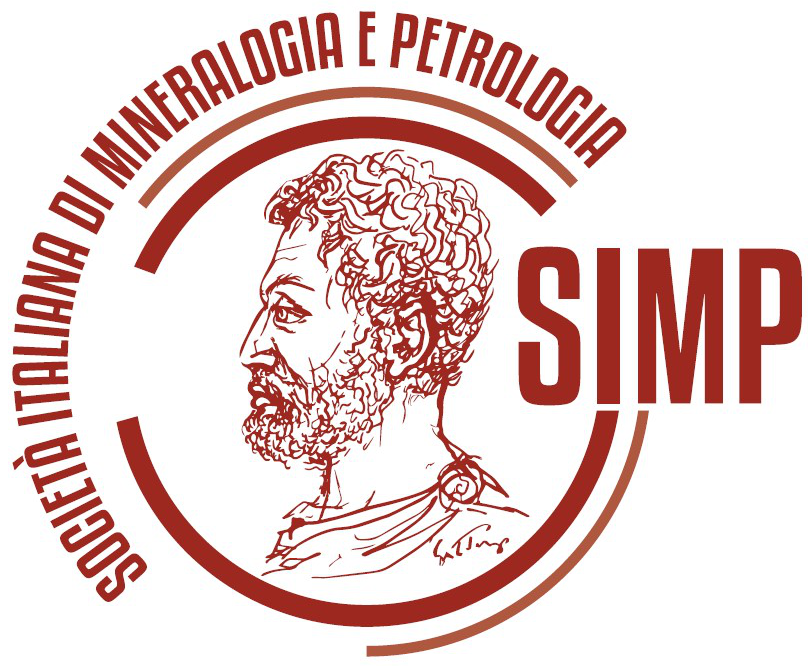09/09/2022
The University of Catania proudly hosted this international event of high scientific importance, welcomed by the Rector, Prof. Francesco Priolo. The 23rd edition of the DRT conference, held in Catania in the splendid setting of the Benedictine Monastery (UNESCO geo-heritage site), an architectural jewel of the Sicilian Baroque, was attended by some 130 scholars from over twenty different countries, most of them in person. It was a fruitful opportunity to exchange and compare ideas, approaches and scientific innovations in the field of rock rheology, tectonics and deformation.

The DRT2022 conference hosted the awarding of the prestigious Henk Zwart medal (IUGS) to Professor Renèe Heilbronner for her important studies in the field of structural geology and microscale deformation analysis during her brilliant career. Prizes were awarded for the best oral and poster contributions of the congress to early career researchers and PhD students.

The hosting team organized both thematic workshops with Italian and foreign colleagues and three pre- and post-congress excursions to the volcanic area of Etna, the Hyblean carbonate platform area, and the crystalline basement of Calabria.
Overall, the numerous feedbacks received from the participants by the organizers were gratifying and made all organizational efforts easier to overcome. A big thank you to all the participants who honored us with their presence, and a heartfelt thank you to the technical and commercial sponsors, the sponsoring bodies and scientific societies, the Regional Department of Tourism, and finally the team of collaborators without whom the success of DRT2022 Catania would not have been possible.

See you in Barcelona for the next 2024 DRT meeting.
Ad maiora semper,
Eugenio Fazio – DRT2022 Catania Organizing Committee (current secretary general of the European DRT Society)
30/07/2022
Dear all,
we are pleased to announce the best contributions submitted to the DRT2022 Catania meeting:
Award for the best poster DRT2022 Catania
Commission members: Bernhard Grasemann, Rick Law and Paris Xypolias
- Alessandro Petroccia (University of Turin – Italy)
- Lisa Marie Brückner (Ludwig-Maximilians University of Munich – Germany)
- De Caroli Sara (Cardiff University – Wales, United Kingdom)
Award for the best oral presentation – DRT2022 Catania
Members of the Committee: Chiara Montomoli & Michael Stipp
- Ferdinando Musso Piantelli (University of Bern – Switzerland)
- Martin Jouvent (Charles University of Prague – Czech Republic)
- Vincent Wicker (CRPG University of Lorraine – France)
We will send the winners a certificate by email, congratulations to them on their work,
The Organizing Committee
Dear DRT2022 Catania participants, you will find on this page some useful information about the upcoming meeting.
Second Circular DRT2022 Catania meeting
Please click here to download the pdf file (more info about web-meeting access will be sent separately by mail to attendees)
CONFERENCE PROGRAMME DRT2022
- Monday 4th July: Pre-conference excursion (Etna) and icebreaker party (18:00 – Botanic Garden, Unict — Via Etnea, 397 Catania – CT)
- Tuesday 5th July: Opening ceremony. Oral and poster sessions (Piazza Dante 32, Catania)
- Wednesday 6th July: Oral and poster sessions, business meeting (16:00), HZM award ceremony, conference dinner (19:30)
- Thursday 7th July: Oral and poster sessions, best poster & talk awards (12:30), closure ceremony (16:00) & Benedictine Monastery tour (17:00)
- Friday 8th & Saturday 9th July: Post-conference field trip (Calabria)
- Sunday 10th July: Post-conference excursion (Hyblean plateau – Siracusa and Ragusa districts)
Social event in Catania (mid-conference event – social dinner 6th July 2022 – extra cost – need booking) Benedictine Monastery – Levante Cloister (same location of break)

Thematic Sessions scheduling
- S1. Microtectonics (5th July, 9:30-12:45)
- S2. Active tectonics: local/regional observations and monitoring methods (5th July, 14:00-15:30)
- S3. Numerical & analogue modeling of geological processes (5th July, 16:00-17:30)
- S4. Tectonics, Structural Geology and geophysical exploration (6th July, 09:00-11:00)
- S5. Mountains building & geodynamics (6th July, 11:30-15:30)
- S6. Rock rheology and petrophysical properties of crustal and mantle rocks (7th July 09:00-11:00)
- S7. Interplay between tectonics, crustal melting and granitoid magmatism (7th July, 11:30-12:30)
- S8. Innovative and classical approaches in geosciences (7th July, 14:00-15:30)
Poster info: A0 vertical, please consider that we would like to share all posters in the virtual poster session on Gather, please send your file as PDF /JPG format (max 20 Mb; Min res. 300dpi) within the 25th of June. Thank you!
Confirmed Invited Speakers
- Rob Butler (Aberdeen University, UK) S5. “Are collision mountain belts amplifications of pre-orogenic crustal-lithospheric heterogeneities?”
- Elena Druguet (Autonomous University of Barcelona, Spain) S8. “The importance of structural inheritance in polideformed rocks”
- Bernhard Grasemann (Vienna University, Austria) S2. “Speleothems as recorder of active tectonics: Do they break or not?”
- Luca Menegon (University of Oslo, Norway) S5. “High-stress deformation and short-term thermal pulse preserved in the microstructure of exhumed lower-crustal seismogenic faults”
- Claudia Trepmann (Munich University, Germany) S6. “Interplay of transient high-stress deformation and long-term creep in shear zones”
- Paris Xypolias (University of Patras, Greece) S1. “Complex recrystallization history of quartz at deep subduction levels: examples from Hellenides (Greece)”
- Jiří Žák (Charles University, Czech Republic) S7. “Granite plutons as orogenic strain markers”

Scientific sessions
Talk duration: 12 min. + Q&A duration 3 min.
Poster size: A0 vertical – you will find the code on the panels at poster session – min. res. 300 dpi – max file size 20 Mb – please send your poster within the 25th June by mail to eugenio.fazio@drt-society.org – all posters will be available online on the Gather platform for all congress duration at DRT2022_Catania | Gather )
First day DRT2022 meeting
S1 Microtectonics (Visalli R. & Zucali M. – 5th July, 9:30-12:45)
ORAL PRESENTATIONS
09:30 – 09:55 – Xypolias P.: Complex recrystallization history of quartz at deep subduction levels: examples from Hellenides (Greece)
09:55 – 10:10 – Hu Y.: Folding of a single layer in an anisotropic viscous matrix under layer-parallel shortening
10:10 – 10:25 – Ortolano G: The role that mylonitic rocks play in the kinematic reconstruction of the western Mediterranean microplates
10:25 – 10:40 – Caso F.: Permian high-temperature deformation in a pre-alpine continental crust: the case of the Valpelline Unit of the Austroalpine Domain (Western Alps, Italy)
10:40 – 11:00 – Organization Committee: general information about congress, social events, workshops/webinars, field trips
11:00 -11:30 – Break
11:30 – 11:45 – Mamtani M.: Nanostructures in Oriented Thin Films – From Microtectonics to Nanotectonics and Nanokinematics in Deformed Rocks
11:45 – 12:00 – Volpe G.: Frictional control on the base of the seismogenic zone: insights from the Apenninic basement, Central Italy
12:00 – 12:15 – Grujic D.: Spatial and temporal stress change along a continental megathrust: case study across the Main Central Thrust in the Himalaya.
12:15 – 12:30 – Pozzi G.: The role of fault rock fabric in the dynamics of laboratory faults
12:30 – 12:45 – Magni S.: Stylolites In Carbonate Rocks: morphological variations according to host rock textures
12:45 -14:00: Lunch break
S1. POSTERS
1-1A – Bestmann M. – Influence of deformation and fluids on Ti exchange in natural quartz
1-2A – Nania L. – Quantitative textural analysis of sheath fold fabrics
1-3A – Xypolias P. – Columnar calcite modification in high-pressure marbles: mechanism and implications
1-4A – Keppler R. – Crystallographic preferred orientation analysis of Cretaceous high-pressure units of the Eastern Alps – preliminary results
1-5A – Kirilova M. – Origin and structural transformations of graphite in cataclasites from the Alpine Fault zone, New Zealand
1- 6A – Montemagni C. – The Simplon Shear Zone (Western Alps): how middle and upper continental crust reacts to prolonged extension
1-7A – Simonetti M.- Development of regional-scale shear zones revealed by multidisciplinary investigation: the case study of the Ferriere-Mollières Shear Zone (Argentera Massif, Western Alps)
S2 Active tectonics: local/regional observations and monitoring methods (Barreca G., Gross F., Gutscher M-A. – 5th July, 14:00 – 15:35)
ORAL PRESENTATIONS
14:00 – 14:20 – Grasemann B.: Speleothems as recorder of active tectonics: Do they break or not?
14:20 – 14:35 – Gutscher M-A.: The FOCUS project: monitoring a submarine strike-slip fault, using a fiber optic strain cable, seafloor geodesy and a land-sea seismological network
14:35 – 14:50 – Margheriti.: FocusX temporary land-network (FXland), seismic data and preliminary analysis
14:50 – 15:05 – Puglisi G.: Structural assessment of Mt. Etna from twenty-five years of SAR interferometry
15:05 – 15:20 – Tringali G.: The 8 February 2022 Santa Tecla creep event on Mt. Etna: observations from field, InSAR deformation and fault detachment
15:20– 15:35 – Truttmann S.: The scaling relations of faults and earthquakes: a multi-scale approach for orogen internal seismic deformation
15:35 -16:00 – Break
S2. POSTERS
2-8A – Corradino M. – Late Miocene – Recent evolution of the Squillace Basin (Offshore Calabria, Italy): a multiscale approach to detect seismogenic faults
2-9A – Giuffrida S. – GNSS monitoring of Belpasso-Ognina Fault, the southern boundary of Mt. Etna unstable flank
2-10A – Murphy S. – Observed deformation along a submarine cable offshore Catania between 2020-2021
2-11A – Giuffrida S. – 3D modelling of Quaternary faults in Southern Calabria
2-12A – Monaco C. – Active tectonic deformation along the Alfeo-Etna Fault System (western Ionian Sea)
2-1B – Russo D. – Rheological modelling of the 1979 Montenegro epicentral area
2-2B – Díaz-Azpiroz M. – Active tectonics controls the dynamics of the Atlantic-Mediterranean divide in the western Betics (S Spain)
2-3B – Velázquez Bucio M.M. – Re-evaluation of the historical surface rupture of 1912 Acambay earthquake, Central Mexico. Morphological, paleoseismological and historical data
2-4B – Robertson R. – Investigating controls on co- and post-seismic smectite production in fault cores
S3. Numerical & analogue modeling of geological processes (Llorens G. – 5th July, 16:00-17:30)
ORAL PRESENTATIONS
16:00 – 16:15 – Kusbach: Shear localization: analog modeling and anisotropy of magnetic susceptibility
16:15 – 16:30 – de Riese: The immense range of deformation structures evolving in highly anisotropic materials
16:30 – 16:45 – Yu: Ice modeling indicates formation mechanisms of largescale-folding in Greenland’s ice sheet
16:45 – 17:00 – Bistacchi :Counterintuitive fracturing in a multilayer under extension: natural examples and numerical modelling
17:00 – 17:15 – Spilotro: Kinematics of direct faulting in the Bradanic Foredeep (Southern Italy) retrieved trough geomatic tools and faulting activity investigated by space-borne multi-temporal SAR interferometry
17:15 – 17:30 – Massaro: Mechanical characterisation of a new Sand-Hemihydrate rock-analogue material: Implications for modelling of brittle crust processes
S3. POSTERS
3-5B – Llorens: For how long can crystallographic preferred orientations be preserved under flow transitions?
3-6B – Hao B. – Full-field numerical simulation of dynamic recrystallisation in polycrystalline halite
3-7B – Díaz-Azpiroz M. – Analogue models of progressive arcs: characterization of finite strain in a ductile layer
3-8B – Yu Y. The effect of dynamic recrystallisation on olivine microstructures: a numerical study
3-9B – Froemchen, M. – How do lithospheric thickness and strength variations facilitate the breakup of ancient cratonic lithosphere?
3-10B – Rogowitz A. – The effect of the volume fraction of garnet on strain localization mechanisms in eclogite: Insights from high temperature – high pressure deformation experiments and numerical simulations.
3-11B – Sachau T. – Modeling the influence of a non-planar bedrock topography on flow dynamics and steady state geometry of ice sheets
Second day DRT2022 meeting
S4. Tectonics, Structural Geology and geophysical exploration (Caputo R., Gomez-Rivas E., Pepe F. – 6th July, 09:00-11:00)
ORAL PRESENTATIONS
09:00 – 09:15 – Flórez-Rodríguez, A. G. Linking fluid temperature and fault kinematics in Picos de Europa (NW Spain)
09:15 – 09:30 – Gambino S. Brittle vs. ductile deformation in the Western Ionian Basin: insights from seismic reflectors pattern and sequential restoration methods.
09:30 – 09:45 – Acosta L. Characterization of fracture patterns in Lower Cretaceous Platform carbonates: examples from the Iberian Chain
09:45 – 10:00 – Seagap fault: example of a large-scale long-lived crustal structure, west Somali basin, offshore Tanzania.
10:00 – 10:15 – Cao D.-S: Natural fractures controlled by strike-slip faults in ultra-deep carbonates: A case study of the Middle-Low Ordovician in the Tarim Basin, China
10:15 – 10:30 – De Siena L.: Seismic response to geodynamic processes and magmatism in the southern part of the Tyrrhenian Sea
10:30 – 10:45 – Köhler S.: Mesozoic stress cycles in the wedge between two collision events
10:45 – 10:50 – Gayrin P. Semi-automated fault extraction and quantitative structural analysis from DEM data of the Magadi and Natron basins, East African Rift System
10:50 – 10:55 – Alhejoj I Mesoscopic structural elements in Jordan and their possible mechanisms of formation
10:55 – 11:00 – – Q&A – Discussion
11:00 -11:30 – Break
S4. POSTERS
4-1A – Naaman I. – Morphological Characteristics and properties of Hydrothermal Breccia
4-2A – Bons P.D. – Fold and strain analysis of the large North-East Greenland Ice Stream
4-3A – Syahputra R. – A protracted and multiphase transition of the Cadomian active margin to a failed rift setting in northern Gondwana
4-4A – González-Esvertit E. – Introducing the Iberian Evaporite Structure Database (IESDB)
4-5A – Aiken C. – TWiST, CAST, and Drill: Three projects investigating geological hazards in the Northern Caribbean
4-6A – Robledo F. – Exploring fault patterns from the interpretation of high-resolution three-dimensional seismic reflection data
4-7A – González-Esvertit E. — Structural analysis of giant quartz veins from the Eastern Pyrenees (SW Europe)
4-8A – Díaz-Azpiroz, M. – Wrinkle ridges and other structures related to the Deuteronilus shoreline in Utopia Planitia, Mars
S5. Mountains building & geodynamics (Bons P. & Montomoli C. – 6th July, 11:30-15:30)
ORAL PRESENTATIONS
11:30 – 11:45 – Cofrade G.: Dating the halokinesis at the frontal structures of the Serres Marginals Thrust Sheet: first results from Les Avellanes area, NE Spain
11:45 – 12:00 – Fazio E.: Petro-structural mapping of the Palmi shear zone (Calabria), a combined field and aerial-based survey
12:00 – 12:15 Musso Piantelli F.: Inversion of a nappe-basement system – a 4D reconstruction
12:15 – 12:30 Yuzhen F.: Subduction erosion associated with Paleo-Tethys closure: Insights from Early Paleozoic accretionary complexes in western Yunnan, SE Tibetan Plateau
12:30 -12:45 Gemignani L.: Response of drainage pattern and basin evolution to tectonic and climatic changes along the Dinarides-Hellenides orogen
12:45 -14:00: Lunch break
14:00 – 14:15 – Wicker V.: Petro-structural investigations of the HP-LT Quartzite-Phyllite (QP) nappe in the northern Peloponnese, Southern Hellenides, Greece
14:15-14:30 – Sanità E.: Tectono-metamorphic evolution of the Briançonnais Units along the southwestern edge of the Alps: Constraints from the Marguareis Massif (Western Ligurian Alps)
14:30 – 14:45 – Jouvent M.: Growth and evolution of the Saxothuringian orogenic wedge and its extensional collapse: the Variscan P-T-t record of the metasediments of Erzgebirge, Bohemian Massif
14:45 – 15:05 Menegon L.: High-stress deformation and short-term thermal pulse preserved in the microstructure of exhumed lower-crustal seismogenic faults
15:05 – 15:25 Butler RWH.: Are collision mountain belts amplifications of pre-orogenic crustal-lithospheric heterogeneities?
15:25 – 15:30 – Q&A – Discussion
15:30 -16:00 – Break
16:00 -17:30 – General Assembly & Henk Zwart Medal award ceremony
17:30-18:00 – Lecture “From c-axes to grain size – 40 years of image analysis” by Renée Heilbronner (HZM recipient)
S5. POSTERS
5-9A – Kotowski, A.J. – Subduction, underplating, and return flow recorded in the Cycladic Blueschist Unit exposed on Syros, Greece
5-10A – de Paz-Álvarez, M.I. – Fluid flow at the base of Variscan thrust sheets in the Cantabrian Zone (NW Iberia)
5-11A – Petroccia A. – In shear we “thrust”: deformation and temperature variation along a thrust-sense shear zone in the hinterland-foreland transition zone of the Sardinian belt
5-1B – Sanità E. – Structural architecture and kinematics of the Helminthoid Flysch-Briançonnais Units coupling: a key for deciphering the tectonic evolution of the southwestern Alps
5-2B – Žák J. – Reconstruction of dismembered Ocean Plate Stratigraphy (OPS) in the Blovice accretionary complex, Bohemian Massif
5-3B – Expósito I. – Contrasting orogenic grain and kinematic patterns along the Betics fold-and-thrust belt as potential expression of deep-seated mechanisms
5-4B – Díaz-Azpiroz M. – Strain partitioning at the active mountain front of the western Betics (southern Spain)
5-5B – Pengfei Li – Variable structural patterns along the Irtysh Shear Zone in Central Asia: a result of arc-arc collision at different crustal levels?
5-6B – Balanyá J.C.- Strain decoupling across the western front of the Alboran domain thrust sheet (Western Gibraltar Arc)
Third day DRT2022 meeting
S6. Rock rheology and petrophysical properties of crustal and mantle rocks (Grujic D. & Ortolano G. – 7th July, 9:00-11:30)
ORAL PRESENTATIONS
09:00 – 09:25 – Trepmann C.: Long-term creep and transient high-stress deformation in shear zones
09:25 – 09:40 – Pongrac: Influence of H2O on deformation behavior and microstructure of quartz: deformation experiments on Tana-quartzite
09:40 – 09:55 – Keppler: Elastic anisotropies of deformed upper crustal rocks in the Alps
09:55 – 10:10 – Fazio M.: Permeability evolution of Bentheim sandstone at georeservoir conditions
10:10 – 10:25 – Rogowitz A.: Panta rhei…But how? Deformation mechanisms at the eclogite type locality (Saualpe-Koralpe Complex, Eastern Alps, Austria).
10:25 – 10:40 – Boneh: Deformation mechanism and textural formation of hornblende – Insights from natural samples and laboratory experiments
10:40 – 10:55 – Vinciguerra S.: Multiscale analysis of physical rock properties at Stromboli Volcano: what controls the frictional properties?
10:55 – 11:00 – Q&A – Discussion
11:00-11:30 – Break
S6. POSTERS
6-1A – Brückner L.M. – Deformed pseudotachylytes from the Silvretta basal thrust – stress-strain conditions during interseismic periods
6-2A – Chakraborty R. – Variation in rock fabric with depth in the upper 1 km of the earth’s crust and its implications for mineralization – a study from the Singhbhum region (India)
6-3A – Dana D. – Frictional-viscous cycles in the Brossasco-Isasca Unit (Dora Maira Massif, Western Alps) metagranitoids: from field mapping to microstructures
6-4A – de Riese T. – High-strain deformation of ice Ih
6-5A – De Caroli S. – Role of amphibole fabric formation and the rheology of subduction shear zones, two examples from exhumed blueschists in the Ryukyu arc (SW Japan) and Lento Unit (Corsica, France)
6-6A – Hawemann F. – Seismic fracturing under high grade conditions in a subduction zone (Central Cordillera, Colombia)
6-7A – Yokoyama H. – Reconstruction of the deformation environment of Shajigami shear zone at eastern margin of Abukuma Mountain, Northeastern Japan
6-8A – Nania L. – Microstructures superposition in marble mylonites: a tool to infer the progressive deformation of the South Tibetan Detachment System in Himalaya
6-9A – Pozzi G. – Slip velocity and fault stability in serpentine-rich experimental faults
6-10A – Závada P. – Anisotropy of magnetic susceptibility as a tool for understanding deformation of salt – example of a structural record in Kuh-e-Namak (Dashti) salt diapir
6 – 11A – Tholen S. – Deformation, reactions and phase mixing in the upper mantle shear zone of northwestern Ronda (Spain)
S7. Interplay between tectonics, crustal melting and granitoid magmatism (Mamtani M. – 7th July, 11:30-12:40)
ORAL PRESENTATIONS
11:30 – 11:55 – Žák J.: Granite plutons as orogenic strain markers
11:55 – 12:10 – Torvela T.: Multi-scale perspectives to strain partitioning within partially molten crust: weakening or strengthening behaviour?
12:10 – 12:25 – Franciele Andres: The Porto Belo Complex orthogneisses and granitoids as markers of collisional and post-collisional transpressive settings in the northern segment of the Dom Feliciano Belt, southern Brazil
12:25 – 12:40 – Russo D.: Insights from AMS study on tectonic evolution of the Serre Batholith (Southern Italy)
12:40 – 12:45 – Q&A – Discussion
12:45 -14:00: Lunch break
S7. POSTERS
7-1B – Jonah J. – Tectonic setting and magnetic fabric of the Central Bohemian dike swarm
7-2B – Spagnoli M. – Segregation and extraction of late magmatic melt and fluids in mushes: experimental approach at high pressure
7-3B – Caso F. – Microstructural and chemical analysis of biotite-gneiss from the Boulder Creek batholith (Front Range, Colorado, USA)
7-4B – Závada P. – Melt softening driven return flow of UHP metagranitoids in continental subduction channel
7-5B – Russo D. – Relationships between magma emplacement, tectonics and metasomatism in late Variscan granitoids (Peloritani Mountains, southern Italy)
S8. Innovative and classical approaches in geosciences (Fazio E. & Grasemann B. – 7th July, 14:00-15:30)
ORAL PRESENTATIONS
14:00 – 14:05 – TOPCON (sponsor) about products & services.
14:05 – 14:30 – Druguet E. & Carreras J.: The importance of structural inheritance in poly-deformed rocks.
14:30 – 14:45 – Arienti G. et al.: The importance of structural data in constraining 3D implicit structural models: the Northwestern Alps case study, Italy.
14:45 – 15:00 – Forzese M. et al.: Digital Outcrop Model (DOM): method vs. aim.
15:00 – 15:15 – Thiele S.T. et al.: Hyperspectral outcrop characterization for structural mapping.
15:15 – 15:25 – Toy V. et al.: How should we translate Structural Geology and Tectonics-specific terms to other languages?
15:25 – 15:30 – Q&A – Discussion
15:30-16:00 – Break
S8. POSTERS
8-6B – Volpe G. – Brittle microstructures of experimental faults in phyllosilicate-granular mixtures.
8-7B – Casiraghi S. – Predicting hydraulic properties in poly-deformed basement rocks with an outcrop analogue approach.
8-8B – Druguet E. – Applying a triclinic transpression model to a complex high strain zone at Cap de Creus (Eastern Pyrenees). Preliminary results.
8-9B – Sleath et al.: Using virtual outcrops to investigate strain compatibility when thrusts deform stiff beams – a new model for thrust fault formation.
8-10B – Fazio E. et al.: The use of 3D virtual outcrop models for teaching purposes: an example from Cap de Creus folded quartzites.
8-11B – Stipp M. et al.: Tectonometamorphic development of the Eckergneis Complex (Harz Mountains, Germany).
Field Trips
| Pre-conference field trip: Etna volcano | Post-conference field trip: Calabria crystalline complexes | Post-conference field trip: Hyblean Plateau |
| Monday 04-07-2022 | Friday 08 & Saturday 09-07-2022 (rooms booked at Arcobaleno Hotel for all attendees – included in the fee) | Sunday 10-07-2022 |
| Meeting Point (15 min. walk from congress venue): Via Dusmet – Catania (37.50198072741107, 15.089288212021131) Plus code: G32Q+QP Dep. 08:00; Arr. 17:30 | Meeting Point (15 min. walk from congress venue): Via Dusmet – Catania (37.50198072741107, 15.089288212021131) Plus code: G32Q+QP Dep. 8:00 AM; Arr. 21:00* * This is a rough estimate as it is necessary to take the Calabria – Sicily ferries (scheduled departures every 40 minutes) | Meeting Point (15 min. walk from congress venue): Via Dusmet – Catania (37.50198072741107, 15.089288212021131) Plus code: G32Q+QP Dep. 08:00; Arr. 17:30 |
| Volcano-tectonics evidences (Field trip leaders: Puglisi, Monaco, Punturo, De Guidi) | From ductile to brittle deformation: crystalline basement: Palmi Shear Zone (Field trip leaders: Cirrincione, Fazio, Ortolano) – Rovaglioso syn-tectonic granitoids (Field trip leaders: Fazio, Fiannacca) & Messina Strait fault system (Field trip leaders: Monaco, Barreca). | Faults and sedimentary basins (Field trip leaders: Catalano, Maniscalco) |

Workshops and webinars (in person & online)
W2. (6th July – 14:00-16:00) Workshop “Flank stability and structure on volcanoes”: Bonforte A. (INGV Catania) – Di Traglia S. (OGS Trieste). It will be focused on studies, datasets, methodologies, models and, in general, state of the art of the current knowledge about the stability of volcanic edifices in the World. The workshop will last 2 hrs and will be introduced by 3 or 4 invited talks in the first hour, to introduce some methods, models, applications, and then, in the second hour, participants will present some case studies and/or open questions to be discussed together interactively.
W3. (7th July – 9:00-11:00) Webinar “Present-day kinematics of Sicily from a PS-InSAR analysis of Sentinel-1 data”: Henriquet M. (CEREGE, Aix-en-Provence). The Quaternary geodynamics of Sicily is controlled by the slow convergence of the Nubian-Eurasian plates and the rapid retreat of the Ionian slab along the volcanically and seismically active Eastern Sicilian Margin. We processed Sentinel-1 satellite radar images with a Permanent-Scatterer approach to provide an island-wide quantification of surface displacements at a high spatio-temporal resolution over the 2015-2020 timespan. The calculated mean surface velocities along the satellite line-of-sight were converted into the Nubia and ITRF2014 reference frames by using GNSS velocities derived from MAGNET time series. The resulting pseudo-3D velocity field confirms the general uplift of the Nebrodi-Peloritani range (1.5±0.5 mm/yr) and its differential motion relative to mainland Sicily along the Cefalù-Etna seismic zone. The vertical velocity field in the Eastern Hyblean region also reveals a long-wavelength eastward down-bending of the margin, with coastal vertical rates 2-3 mm/yr lower than the Quaternary, and centered on the inferred epicentral area of the 1693 Noto earthquake. The low activity of Western Sicily is, however, in agreement with the previously estimated Quaternary rates. Fast transient processes are also captured over the studied period (2015-2020), notably the tectono-magmatic activity of Mount Etna, as well as gravitational instabilities and anthropogenic ground subsidence all over Sicily.
W4. (6th July – 9:00-11:00) Workshop “Quantitative microstructural analysis”: Ortolano G. (University of Catania) – Visalli R. (University of Catania). The workshop intends to furnish skills about informatic instruments, use of devices, and semiautomated workflows able to facilitate the quantitative restitution of mineralogical, compositional, and fabric arrangement of rocks at the microscale. This result will be achieved by the combined use of two ArcGis based package tools, namely: a) The Quantitative – X-Ray Map Analyzer (Q-XRMA), based on the statistical processing of X-ray images, able to recognize the minerals and sub-mineral phases, potentially calibrating each pixel of the classified images; b) The Micro-Fabric Analyzer (MFA) useful for the quantitative extrapolation of rock microstructural features, that takes advantage of both of the characteristics of the X-ray images and the optical images features. The Q-XRMA/MFA combined effects allow thus quantifying fabric parameters subdivided per mineral type, automating the numerical fabric data extrapolation at the thin section scale in a GIS environment.
W5. (5th July . 14:00 – 16:00) Workshop “Virtual outcrop & 3D models”: Fazio E. (University of Catania) – Thiele S. (Freiberg) – Lanzafame G. (University of Catania).
Part 1 – Aerial survey & virtual structural geological mapping (Fazio E.): a brief introduction about aerial images acquisition up to the recognition of geological structures and their orientation on virtual outcrops will be made. A workflow through the various steps consisting of drone planning mission (PiX4D free software), passing through 3D virtual outcrop reconstruction (Agisoft Metashape) to virtual structural-geological analysis (GeoVis3D) will be shortly delineated.
Part 2: Mapping cliffs with UAVs and hyperspectral cameras – challenges, advances and opportunities (Thiele S.): cliffs present spectacular and revealing geological exposures for detailed and spatially continuous structural mapping, but are difficult to investigate in detail due to access limitations and safety concerns. Uncrewed Aerial Vehicles (UAV) and Structure from Motion Multi-View Stereo (SfM-MVS) workflows provide a powerful new tool for mitigating these access issues, but have required the development of a new generation of quantitative, objective and reproducible digital mapping methods. This session will cover developments in this area, including: (1) fusing hyperspectral data and digital outcrop models for enhanced lithological and structural mapping; (2) semi-automatic approaches for delineating structures and contacts in dense 3-D point clouds, and; (3) methods for estimating 3-D orientation (strike and dip) and associated uncertainty. Finally, implementations of these methods in CloudCompare and the hylite python package will be demonstrated.
Part 3: Computed microtomography and image analysis: 3D investigations at micron scale (Lanzafame G.): this part of the workshop aims to show the main techniques of computed microtomography and image analysis to unveil the 3D structure of geologic materials at micron scale and to retrieve, from 3D images, qualitative and quantitative information about the phases composing the investigated materials. Required software: ImageJ (or Fijii) available at https://imagej.net/software/fiji/downloads.

List of Hotels & B&B near the congress venue
- Dimora De Mauro – https://www.dimorademauro.com/it
- La Collegiata – https://www.lacollegiata.com
- B&B Palazzo Bruca – http://www.brucaroomhotelcatania.it
- B&B Dimoramuri – https://www.dimoramuri.it
- Hotel Il principe – https://www.ilprincipehotel.com/new/en/
You can ask for special price offer as DRT2022 Catania delegate (University of Catania has special convention for hosts with most of hotels in the above list)
———————————————————————————————————
Dear friends and colleagues,
Following several requests for clarification received from those interested in the DRT2022 Catania (Italy) congress, we would like to point out that the deadline for sending abstracts is 10th May for all participants who have registered on the website. There are two registration fees:
- Early Bird discounted fees that will close on 31th March (last call – initially set for 1st March, postponed the first time to 15th March);
- Late Bird fees that will come into force on 1st April; it will still be possible to send the abstracts by the deadline (10th May).
The DRT2022 Catania Organizing Committee
Please note: a participant already registered as Early-bird can, if necessary, send the abstract even after the Early-bird closing date (without any penalty or supplement to be paid) to the following email address: eugenio.fazio@drt-society.org.
DRT2022 Catania meeting – Early bird fee & abstract submission postponed to 15th March 2022
Dear friends and colleagues,
In order to encourage greater participation in the DRT 2022 conference in Catania, we are pleased to inform you that the deadline for submission of abstracts (and the related reduced Early bird registration fee) has been postponed to 15th March 2022. The deadline to apply for support for PhD students and early-career researchers has also been postponed to 10th March 2022; please come forward, you will be offered the extra programmed activities (e.g. workshop/field trips/social dinner) that you would like to participate in and also the possibility to stay for free during the days of the conference in double room accommodation near the conference venue. We are looking forward to your contributions to the next DRT conference in person (and also online) for a rich line-up of interventions thanks also to the valuable contributions of the invited speakers. We will tell you more in the second circular shortly on the official website, so stay tuned.
The DRT2022 Catania Organizing Committee

Click here to register for the DRT 2022 Catania International meeting
The 23° DRT meeting will be hosted in Catania (Italy) from 5th to 7th July 2022 at the University of Catania (venue: Benedictine Monastery Catania | Monastero dei Benedettini); fees, deadlines and further information will be available soon on the DRT European Society official webpage. Pre- and post-conference excursions to Mount Etna, the crystalline complexes of Calabria, and the Iblei mountains are also included in the program.
- Monday 4th July: Pre-conference excursion (Etna) and icebreaker party;
- Tuesday 5th July: Opening ceremony. Oral and poster sessions;
- Wednesday 6th July: Oral and poster sessions, business meeting, and conference dinner;
- Thursday 7th July: Oral and poster sessions, closure ceremony;
- Friday 8th & Saturday 9th July: Post-conference fieldtrip (Calabria crystalline basement);
- Sunday 10th July: Post-conference fieldtrip (Hyblean plateau – Siracusa and Ragusa districts).
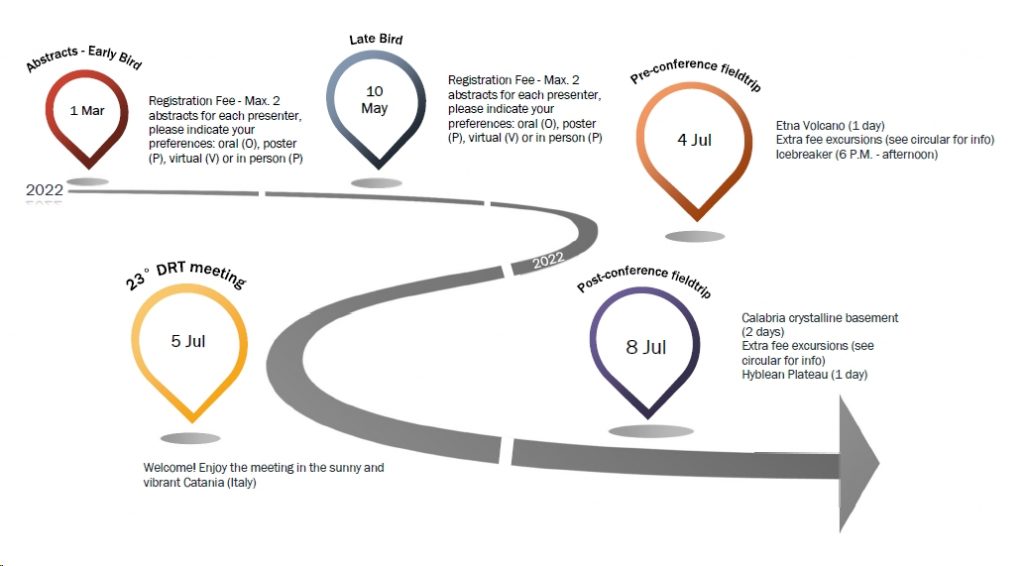
Scientific patronages and sponsorships:
Università degli Studi di Catania
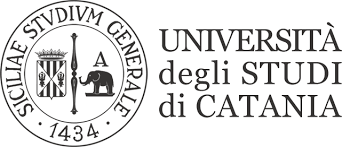
INGV (Istituto Nazionale di Geofisica e Vulcanologia);

SGI (Società Geologica Italiana);
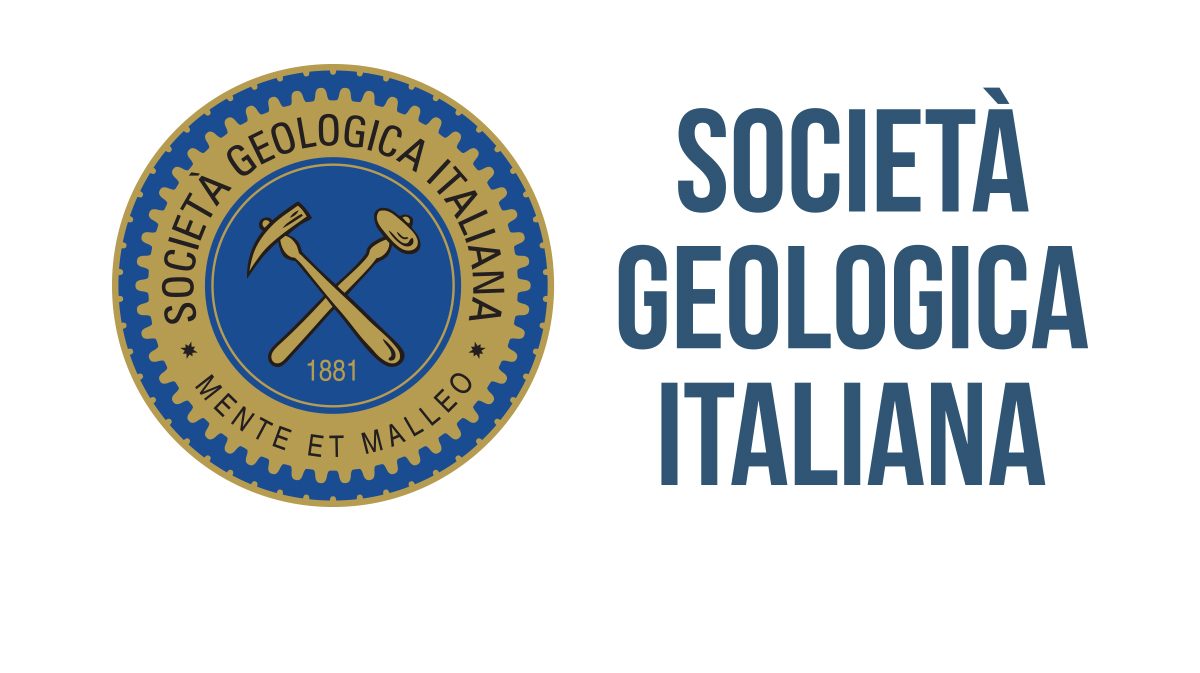
SIMP (Società Italiana di Mineralogia e Petrologia)
CNG (Consiglio Nazionale dei Geologi)
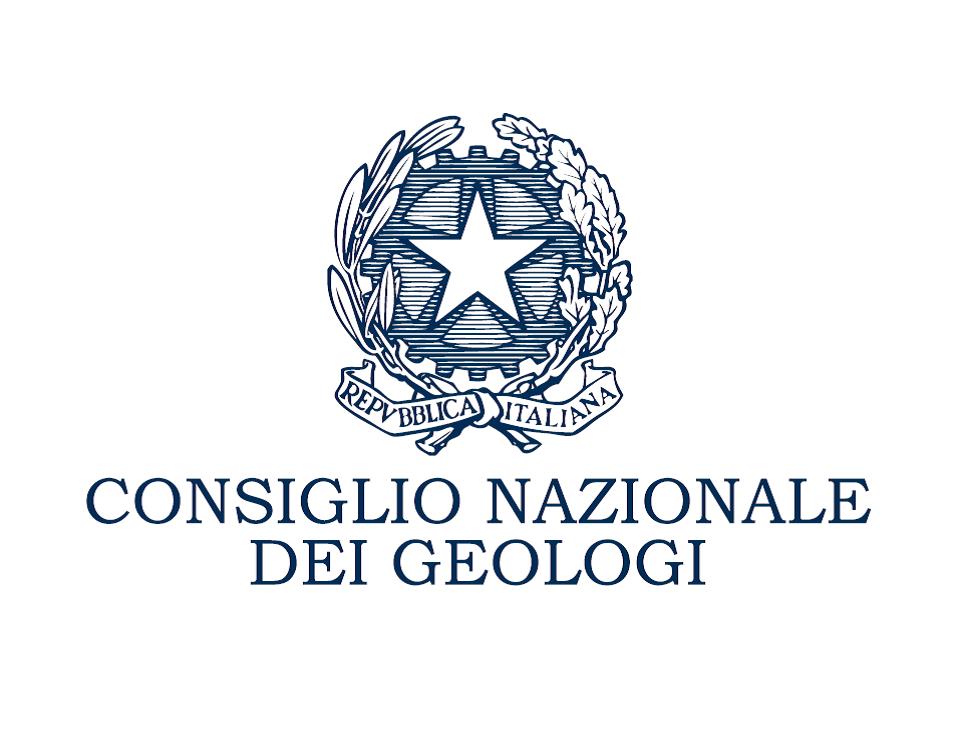
Assessorato Regionale del turismo, dello sport e dello spettacolo – Sicilia
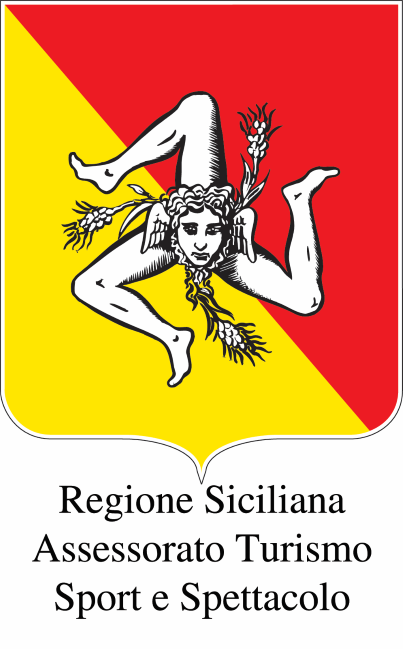
ORGS (Ordine Regionale Geologi di Sicilia)

Topcon Positioning Group

Logistic partners
- Gather
- SGI (Società Geologica Italiana)
- Dipartimento Scienze Biologiche Geologiche Ambientali (Università di Catania)
- Dipartimento Scienze Umanistiche (Università di Catania)
- Funivia dell’Etna
- Comune di Palmi (RC)
- AMTS Catania S.p.A.
- FCE Ferrovia Circumetnea – Metro Catania








